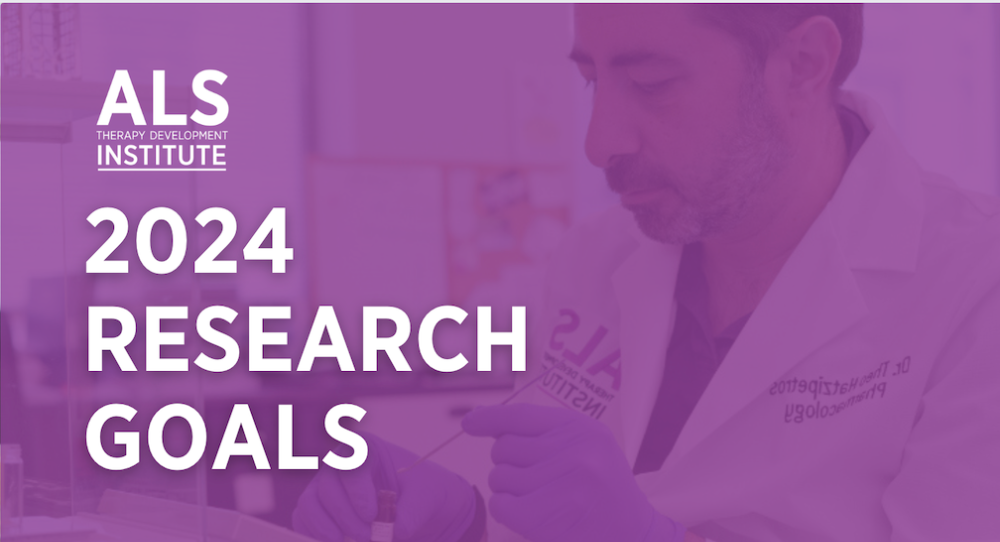
In 2024, we are committed to building upon our achievements from 2023 while exploring innovative avenues to enhance our understanding of ALS and develop effective treatments. Our efforts will focus on several key areas:
- Taking Biomarkers to the Next Level
- Harnessing New Medical Technologies
- Advancing Promising Drug Programs
- Expanding Drug Testing in the Lab
- Launching the ALS Trial Navigator
- Further Expansion of ARC
- Drug Discovery Collaborations
Read below for details on how we will work to accomplish each of these goals. If you want to talk to someone at ALS TDI about our 2024 goals, please contact us here.
Taking Biomarkers to the Next Level:
We will continue our pursuit of biomarkers as improved clinical trial measures and indicators of disease progression.
- We will relate voice recordings and accelerometer data to meaningful clinical outcomes in people with ALS.
- We will analyze blood samples from ARC participants to better understand how Neurofilament Light Chain (NFL) levels correlate with ALS symptoms and disease progression.
- We will continue broader biomarker assessment efforts by generating expanded datasets and studying omics data contributed by ARC study participants worldwide.
Harnessing New Medical Technologies:
We will harness new medical technologies and explore their potential to treat ALS and neurodegeneration:
- We will explore and experiment with new technologies that could enable the direct delivery of ALS therapies to the brain and spinal cord.
- We will venture into mRNA therapeutics to potentially treat ALS by increased levels of specific protein which may be deficient in people with ALS.
Advancing Promising Drug Programs:
We will focus on advancing Copper Complexes and Type I PRMT Inhibitors to the next stages of development and testing.
- To advance Copper Complexes, we will aim to establish patient stratification criteria and optimize drug formulations.
- To advance PRMT Inhibitors, we will test in animal models to evaluate efficacy and impact on disease progression. Additionally, we will assess the impact of PRMT inhibitors on two biological processes that have recently been shown to play a role in ALS disease biology.
Expanding Drug Testing in the Lab:
We will advance our work to model the disease and test new potential treatments in our lab:
- We will broaden our human iPSC drug screening, emphasizing models beyond familial ALS genes, and focusing on understanding TDP43 pathology.
- We will expand our animal drug screening models to represent broader ALS subtypes.
Launching the ALS Trial Navigator:
We will introduce an innovative platform to help the ALS community navigate the complexities of ALS clinical trials:
- The ALS Trial Navigator will guide ALS patients and caregivers through clinical trial preferences and eligibility assessments tailored to their condition, with the ultimate goal of facilitating participation in trials.
Further Expansion of ARC:
We will increase the depth and impact of our ALS Research Collaborative.
- We are continuing to enroll more people in the ALS Research Collaborative (ARC) study, intending to enroll a total of 2000 participants including individuals from diverse backgrounds and asymptomatic carriers of ALS-related gene mutations.
- We will increase the amount of data shared through the ARC Data Commons so that stakeholders around the world can access and analyze these data to inform their research.
Drug Discovery Collaborations:
We will continue to fuel the clinical pipeline with promising drugs, including those invented outside of our lab:
- We will leverage our in-house expertise to advance therapeutic candidates from Corsalex through our cell-based screens. Candidates that show promise will be moved into animal models.
- We will lend our scientific expertise and disease models to validate potential ALS treatments from industry and academic partners – helping those that show promise to advance toward trial.
What Do I Do Next?